Collections Open Evening
Do you know how to repair an Indian painting? Or mend a Persian manuscript? Do you know the story of Nana Fadnavis and the Maratha Peshwa, Madhu Rao Narayan, or the how the English came to know the scenes of Mysore? These were all topics covered in our Open Evening on 23rd May when we were delighted to have 4 speakers talking about our collections. Firstly Bethia Grice, former Camberwell Conservation student and currently a conservator at the National Maritime Museum, spoke on her project to restore 3 paintings from the Tod Collection
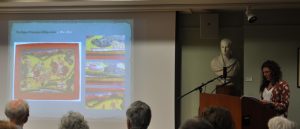
Bethia explained the process to stabilise the pigments in the paintings involving detailed work under a microscope. We are very grateful to her – these pictures are now restored, mounted and framed and so can be safely accessible to researchers. Our next speaker was Jasdip Singh Dhillon, also a former Camberwell student and currently working in Berkshire Record Office, who spoke about his project with a Persian manuscript. He described dealing with broken binding, insect damage, pigment degradation of the paper, and the many decisions he made on how best to restore the manuscript for the future.
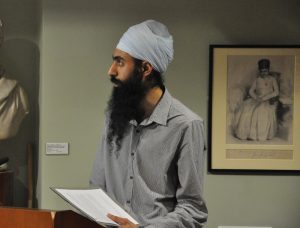
President Gordon Johnson then took the floor and did an excellent job in explaining the history behind our newly returned painting – the James Wales 1792 portrait of Madhu Rao Narayan, Nana Fadnavis and attendants. Dr Johnson revealed the power of Fadnavis in that period of history set within the wider context of the many powers and princes in India and the interaction of the English with them.
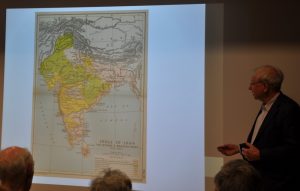
Finally we heard RAS Treasurer, Lionel Knight speak on the history of Mysore. He explained why James Hunter’s 1805 book, Picturesque scenery in the Kingdom of Mysore : from forty drawings taken on the spot would have been welcomed and appreciated among the English middle classes and how such scenes were popular and painted by those, including J.M.W. Turner, who had never visited the area.
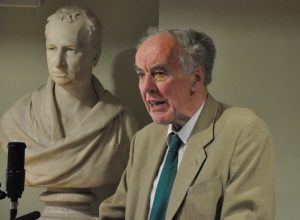
We are grateful to all our speakers who gave of their time and expertise. All the treasures from our Collections, about which they had spoken, were on display in the Reading Room for visitors to see. After the talks, many people took time to examine the Indian paintings to see if they could identify which parts had been restored or stood staring at the neatness of the binding on the Persian manuscript. But these weren’t the only treasure to be viewed. A further display was also put out in the Council Room with items ranging from 12/13th century Buddhist Sanskrit Manuscript to the walking stick of Sir Richard Burton, given him by the King of Dahome. There were early photographs of Hong Kong and Canton merchants, items from the archive of Thomas Manning and a Kammavaca Burmese manuscript. It was a delight to see so many people taking the opportunity of seeing some of our Collections and we hope to be able to repeat this in the future with other speakers and more items from the wealth of our Collections.
This was not the only recent event at the RAS. On Tuesday 16 May, Dr Simon Layton from Queen Mary, University of London lectured on Piracy and Politics in the Indian Ocean World providing a fascinating insight into events and peoples operating in the Indian Ocean – the traders and the usurpers of trade in 19th century Indian regions.
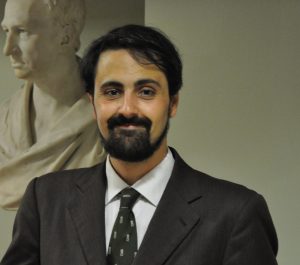
On Monday 22nd May, Professor Jonathan Bloom. Professor of Islamic and Asian Art, Boston College, lectured on Silk Road or Paper Road? Professor Bloom traced the history of paper, both in its construction and its route from east to west, highlighting the similarities with the more widely known “Silk Road”.
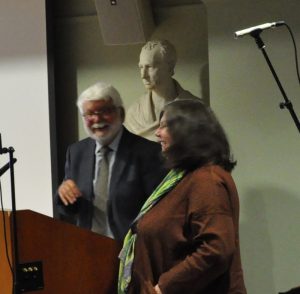
We would encourage anyone who is interested to attend our talks. The next one will be on Thursday 8th June at 6pm, when Dr Peter Frankopan from the University of Oxford will lecture on Asia and the Formation of Early Modern Europe. All are welcome.
